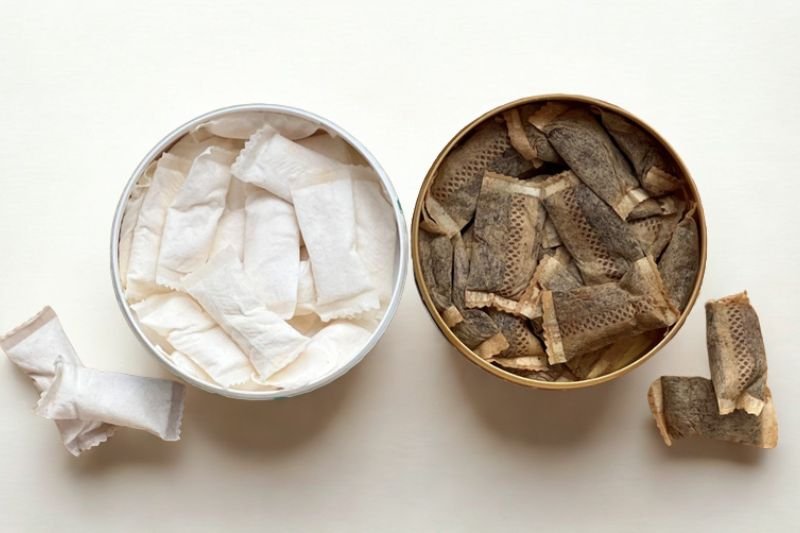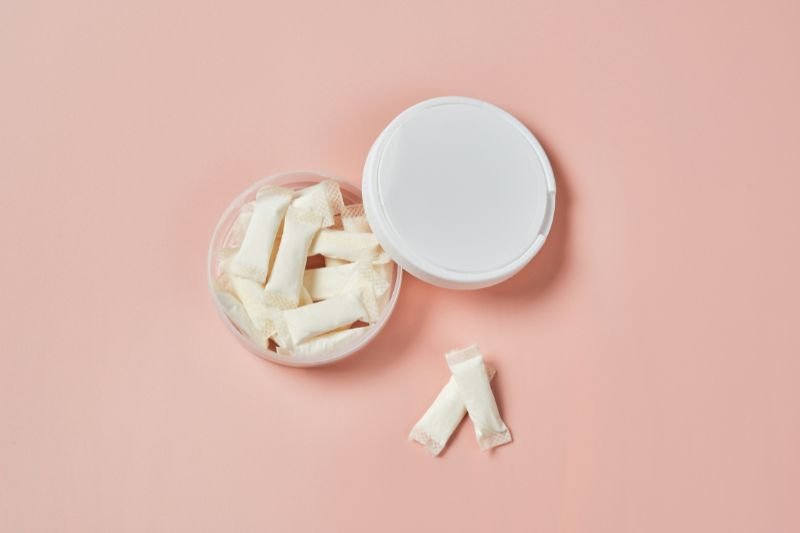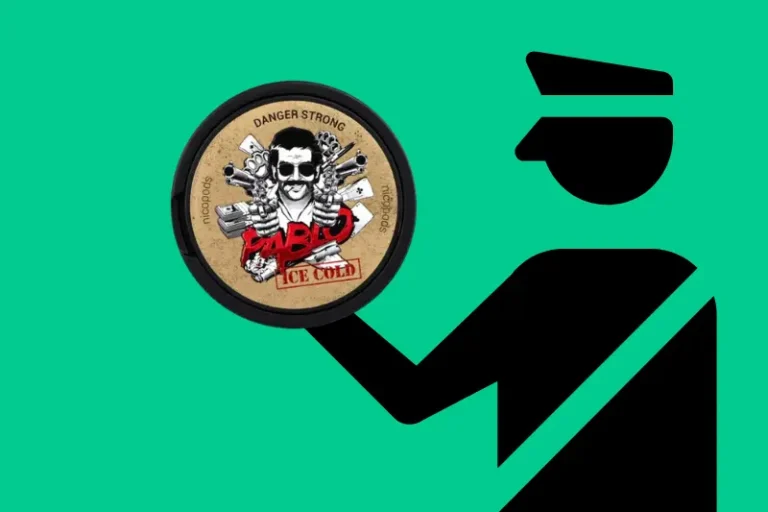Is Nicotine Pouch the Same as Snus? Key Differences Explained
Many people wonder: is a nicotine pouch the same as snus? The comparison of snus vs nicotine pouch reveals significant differences that affect everything from ingredients to legal status. While these products may look similar and are used in the same way, understanding the distinction between snus and nicotine pouches is crucial for making informed choices about tobacco alternatives.
In this comprehensive guide, we’ll explore the key differences in the snus vs nicotine pouch debate and help you understand which smokeless option might be right for you.
What is Snus? Traditional Tobacco Product Explained
Understanding snus is essential when comparing snus vs nicotine pouch products, as snus represents the traditional tobacco-based option in this comparison.
Snus is a traditional smokeless tobacco product that originated in Sweden in the early 18th century. Unlike other forms of oral tobacco that require spitting, snus is designed to be discreet and spit-free, making it a popular alternative to smoking in many Nordic countries.
The key ingredients in traditional snus include:
- Ground tobacco leaves
- Water
- Salt (sodium chloride)
- Sodium carbonate (to adjust pH)
- Flavorings and aromatics
What sets snus apart from other tobacco products is its unique manufacturing process. Swedish snus undergoes heat treatment (pasteurization) rather than fermentation, which significantly reduces harmful tobacco-specific nitrosamines (TSNAs). This process, combined with strict quality control standards, has contributed to snus being considered a less harmful alternative to smoking.

- Loose snus: Moist, ground tobacco that users portion themselves
- Portion snus: Pre-packaged in small pouches for convenience
Traditional snus comes in two main formats:
What are Nicotine Pouches? The Tobacco-Free Alternative
In the snus vs nicotine pouch comparison, nicotine pouches stand out as the tobacco-free alternative that has revolutionized the smokeless nicotine market.
Nicotine pouches represent a modern innovation in nicotine delivery systems, developed as a tobacco-free alternative to traditional snus. First introduced in the 2010s, these products have rapidly gained popularity worldwide, particularly among users seeking to avoid tobacco while still consuming nicotine.
Key ingredients in nicotine pouches include:
- Pharmaceutical-grade nicotine (extracted from tobacco or synthetic)
- Plant-based fibers (typically from pine or eucalyptus)
- Flavorings and sweeteners
- pH adjusters
- Stabilizers and preservatives
Unlike snus, nicotine pouches contain no tobacco leaf material whatsoever. The nicotine is either extracted from tobacco plants through a purification process or synthesized in laboratories. This tobacco-free composition has made nicotine pouches more widely accepted in markets where traditional tobacco products face strict regulations.
Popular nicotine pouch brands include ZYN, VELO, and Nordic Spirit, each offering various flavors and nicotine strengths to cater to different preferences.

Snus vs Nicotine Pouch: Key Ingredient Differences
The most fundamental difference between snus and nicotine pouches lies in their composition:
Tobacco Content:
- Snus: Contains actual tobacco leaves
- Nicotine pouches: Completely tobacco-free
Nicotine Source:
- Snus: Naturally occurring nicotine from tobacco
- Nicotine pouches: Extracted or synthetic nicotine
Base Materials:
- Snus: Ground tobacco as the primary base
- Nicotine pouches: Plant fibers (pine/eucalyptus cellulose)
Moisture Levels:
- Snus: Typically 30-50% moisture content
- Nicotine pouches: Generally drier, 0-30% moisture
pH Levels:
- Snus: pH 8-9 (more alkaline)
- Nicotine pouches: pH 7-9 (varies by brand)
Additional Ingredients:
- Snus: Traditional preservatives, natural tobacco compounds
- Nicotine pouches: Modern food-grade additives, artificial flavors
These differences significantly impact the user experience, from flavor profiles to nicotine delivery rates.
Health Considerations: Comparing Snus and Nicotine Pouches
When comparing snus vs nicotine pouches from a health perspective, several factors come into play:
Cancer Risk:
- Snus: Contains tobacco-specific nitrosamines (TSNAs), though at lower levels than cigarettes
- Nicotine pouches: No TSNAs due to absence of tobacco
Oral Health Impact:
- Snus: May cause gum recession and tooth discoloration
- Nicotine pouches: Less likely to stain teeth, but can still affect gums
Cardiovascular Effects:
- Both products deliver nicotine, which can affect heart rate and blood pressure
- Neither produces harmful combustion byproducts like cigarettes
Addiction Potential:
- Both products are addictive due to nicotine content
- Addiction risk depends more on nicotine strength than product type
Research from the Karolinska Institute in Sweden suggests that while snus carries some health risks, it’s significantly less harmful than smoking. Nicotine pouches, being newer, have less long-term research available but are generally considered to have fewer health risks due to the absence of tobacco.
Usage and Experience Differences
The user experience differs notably between snus and nicotine pouches:
Placement and Duration:
- Both products are placed between the upper lip and gum
- Snus: Typically used for 30-60 minutes
- Nicotine pouches: Often last 20-45 minutes
Nicotine Release Pattern:
- Snus: Gradual release with a steady plateau
- Nicotine pouches: Often faster initial release
Flavor Experience:
- Snus: Tobacco-centric flavors with subtle additions
- Nicotine pouches: Wide range of flavors without tobacco taste
Physical Sensation:
- Snus: More “drip” and saliva production
- Nicotine pouches: Drier experience with less drip
Discretion Level:
- Snus: Slightly more noticeable due to moisture
- Nicotine pouches: Often called “all-white” products for their discretion
Users report that snus provides a more traditional tobacco experience, while nicotine pouches offer cleaner flavors and less mess.
Legal Status: How Regulations Differ
The legal landscape for snus vs nicotine pouches varies significantly worldwide:
Snus Regulations:
- Banned for sale in the EU (except Sweden)
- Gray area in Thailand: technically banned but openly sold
- Legal in Norway, Switzerland, and the United States
- Heavily restricted in Australia and New Zealand
- Gray area in many Asian countries
Nicotine Pouch Regulations:
- Generally face fewer restrictions than snus
- Legal in most EU countries
- Less regulated in Thailand due to tobacco-free status
- Regulated as consumer products rather than tobacco in many jurisdictions
- Rapidly evolving regulatory landscape
Key in Thailand:
- Nicotine pouches may face less scrutiny due to tobacco-free status
- Traditional snus falls under tobacco control laws
- Snus faces stricter controls due to tobacco content
- Both products must be imported with proper customs clearance
- Age restrictions typically apply to both products
- Retailers must display tax stamps on products
In Thailand specifically, both products exist in a regulatory gray area, with physical retail sales operating despite technical restrictions on tobacco products.
Snus vs Nicotine Pouch: Price Comparison in Thailand
Pricing differences between snus and nicotine pouches reflect various factors:
Average Cost per Tin:
- Snus in Thailand: 279-350 THB ($8-10)
- Nicotine pouches in Thailand: 199-300 THB ($6-9)
- For comparison: Same products cost $3-7 in Sweden
- Thai prices reflect approximately 100% markup due to import duties
Factors Affecting Price in Thailand::
- Import duties and customs fees
- Excise taxes on tobacco products
- Air freight costs for freshness
- Brand positioning
- Local regulations
- Production costs
- Limited competition in the market
Value Considerations:
- Snus often contains more portions per tin
- Nicotine pouches may last longer per portion
- Bulk discounts available for both products
Market Availability:
- Snus: Limited by regulations in many countries
- Nicotine pouches: More widely available globally
In markets like Thailand, import duties can double the retail price of both products compared to their countries of origin.
Which Wins the Snus vs Nicotine Pouch Debate?
Choosing between snus and nicotine pouches depends on individual preferences and circumstances:
Snus Advantages:
- Traditional tobacco experience
- Established safety profile
- Longer-lasting satisfaction
- Cultural authenticity
Nicotine Pouch Advantages:
- No tobacco-related health risks
- Wider flavor variety
- Less teeth staining
- Better regulatory acceptance
Best for Beginners: Nicotine pouches often suit newcomers better due to:
- Milder flavors
- No tobacco taste
- More controlled nicotine delivery
Best for Experienced Users: Snus may appeal more to experienced users who:
- Prefer tobacco flavor
- Want longer-lasting effects
- Appreciate traditional products
Situational Recommendations:
- Professional settings: Nicotine pouches (more discreet)
- Social situations: Either, based on local acceptance
- Travel: Nicotine pouches (fewer restrictions)
Popular Brands Comparison
Leading Snus Brands:
- General (Swedish Match)
- Göteborgs Rapé
- Ettan
- Lundgrens
Popular Nicotine Pouch Brands:
- ZYN
- VELO
- LOOP
- LYFT/VELO
- HELWIT
Strength Ranges:
- Snus: 8-45 mg/g nicotine
- Nicotine pouches: 3-20 mg/g nicotine
Flavor Variety:
- Snus: Limited, tobacco-focused
- Nicotine pouches: Extensive, from mint to exotic fruits
Quality Consistency:
- Established snus brands: Very consistent
- Nicotine pouches: Varies by manufacturer
User reviews consistently praise traditional snus brands for authenticity while highlighting nicotine pouches for innovation and variety.
Conclusion
The snus vs nicotine pouch debate ultimately comes down to personal preference, health considerations, and local regulations. Whether you choose traditional snus or modern nicotine pouches, understanding these key differences helps you make an informed decision.
While snus and nicotine pouches serve similar purposes as smokeless alternatives, they differ significantly in composition, health impacts, and legal status. Snus contains tobacco and offers a traditional experience rooted in centuries of Swedish culture, while nicotine pouches provide a tobacco-free option with potentially fewer health risks and greater flavor variety.
Your choice between snus vs nicotine pouches ultimately depends on:
- Personal preferences for tobacco vs tobacco-free
- Local regulations and availability
- Health considerations
- Desired flavor profiles
- Cultural factors
Both products continue to evolve, with new innovations appearing regularly. As research progresses and regulations adapt, the distinctions between these products may become even more important for consumers making informed choices about nicotine consumption.
FAQ – Snus vs Nicotine Pouch
Are nicotine pouches safer than snus?
Nicotine pouches eliminate tobacco-specific risks like TSNAs, potentially making them safer. However, both products contain addictive nicotine and carry cardiovascular risks.
Can I use nicotine pouches if I’m allergic to tobacco?
Yes, nicotine pouches contain no tobacco leaf material, making them suitable for people with tobacco allergies. However, always check ingredients as the nicotine may still be tobacco-derived.
Which lasts longer: snus or nicotine pouches?
Snus typically lasts 30-60 minutes, while nicotine pouches usually last 20-45 minutes. Individual experiences vary based on brand and personal usage habits.
Do nicotine pouches stain teeth like snus?
Nicotine pouches are less likely to stain teeth since they don’t contain tobacco. However, some flavoring agents might cause minor discoloration with long-term use.
Which is stronger: snus or nicotine pouches?
Strength varies by product, not category. Snus ranges from 8-45 mg/g nicotine, while nicotine pouches typically range from 3-20 mg/g. Some specialty snus products are significantly stronger than any nicotine pouch.







